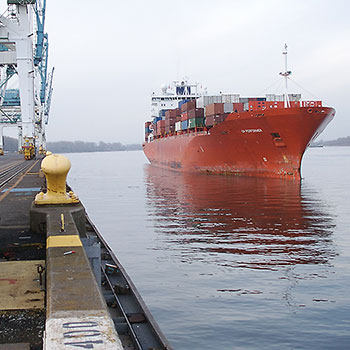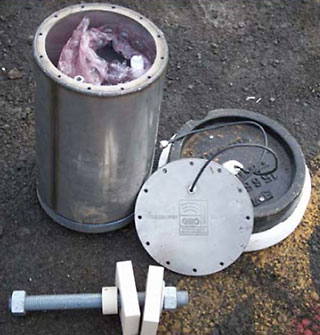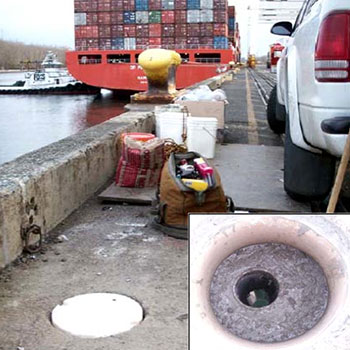Pier Stability
Project Overview
Nearby dredging operations posed a potential risk to this pier at a container ship facility. To monitor the pier, GEO-Instruments provided weldments for the underwater load cells and a wireless, battery-powered logging system for data collection. The logging system was installed flush with the pavement of the pier to avoid obstructing longshoreman operations.
Monitoring Requirements
The port engineer at a container ship facility wanted to verify that nearby dredging operations did not affect load distribution on sheet pile cofferdam cells of the pier. He specified the installation of load cells across the sheet joints that were closest to the dredging. The load cells would be located at the bottom, middle, and top of the cell wall and monitored continuously. In addition, he specified that data collection equipment must not obstruct access to the pier or interfere with longshoreman operations
Implementation
GEO-Instruments provided weldments to act as bearing surfaces for the underwater load cells, and a data logging system to collect readings from the load cells. The data logging system consisted of a logger, battery, and radio enclosed in a waterproof, stainless steel cannister. A flush-mount radio antenna was fitted to the lid of the cannister, and the entire package was installed flush with pier pavement.
The system included a long-life battery pack that would power the system for over one year. Readings were collected every hour via a remote wireless IP connection and processed on the project website. The website provided a convenient and efficient method for distributing the results.

Nearby dredging posed a risk to this containership pier

Waterproof cannister for logger with flush-mount Lid-Link antenna. Weldment for load cell in foreground.

Logger system installed flush with pier pavement. Antenna is embedded in lid.
